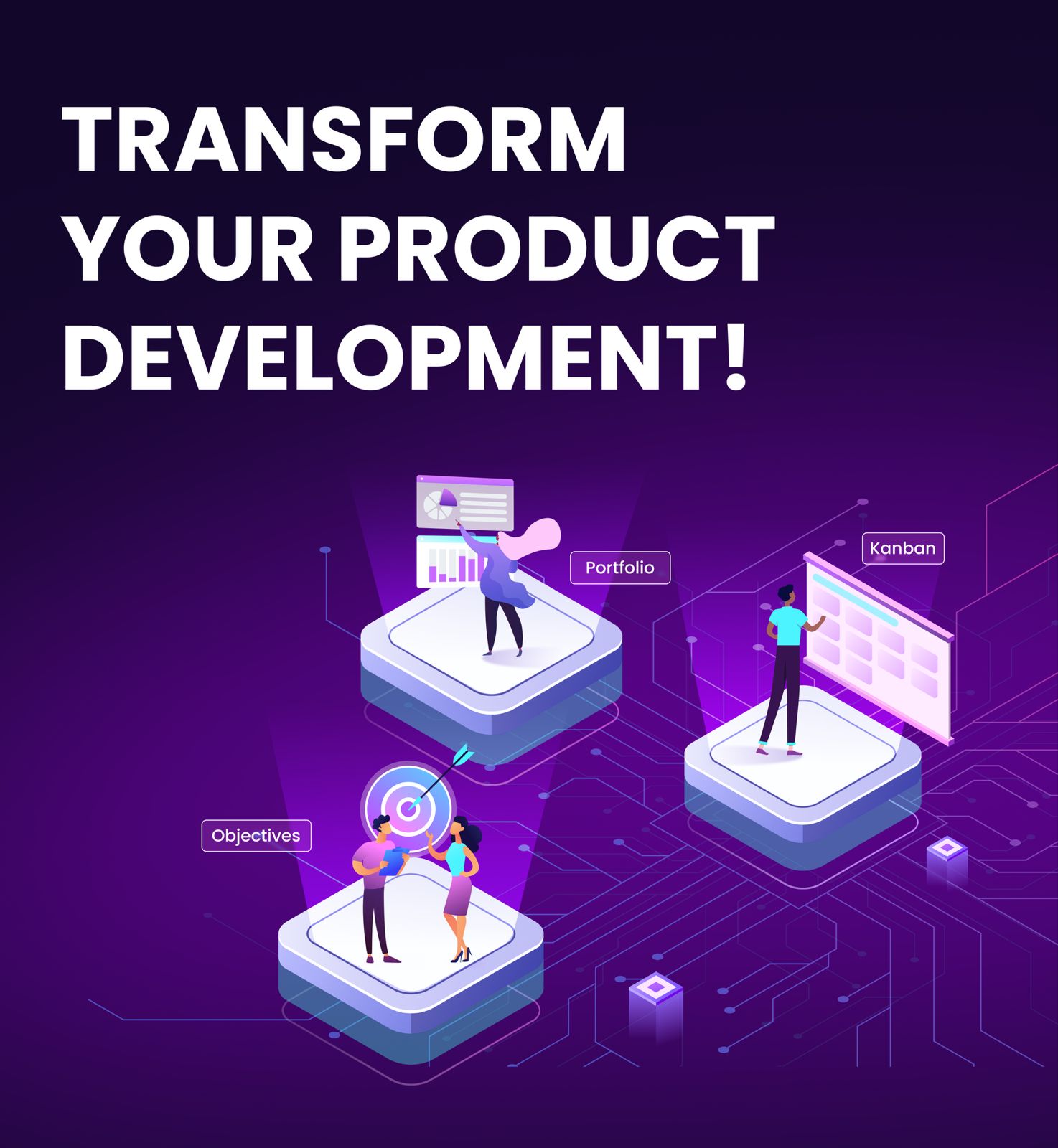Product Backlog: Balancing Vision and Agility in Growing Startups
In the fast-paced world of startups, effective product backlog management is crucial for maintaining agility while steering towards a long-term vision. As startups scale, the complexity of managing the product backlog increases, presenting unique challenges and opportunities. This article explores strategies for balancing vision and agility in product backlog management for growing startups.
If you want to have a complete guide on scrum read our guide ->
Understanding the Product Backlog in Scaling Startups
Before diving into management strategies, it's important to understand how the nature of the product backlog evolves as startups grow:
- Increased complexity: More features, more stakeholders, and more diverse user needs lead to a larger and more complex backlog.
- Longer-term planning: As the startup matures, there's a need for more strategic, longer-term planning alongside short-term agility.
- Multiple products or features: Growing startups often expand their product lines, requiring management of multiple backlogs.
- Diverse stakeholder inputs: More departments and stakeholders contribute to the backlog, increasing the challenge of prioritization.
With these factors in mind, let's explore strategies for effective product backlog management in scaling startups.
1. Implementing a Hierarchical Backlog Structure
As your startup grows, a flat backlog can become unwieldy. Implementing a hierarchical structure can help manage complexity while maintaining clarity.
Key Strategies:
- Create a multi-tiered backlog: Implement a structure with levels such as Epics > Features > User Stories > Tasks.
- Link items to strategic objectives: Ensure each backlog item is connected to higher-level strategic goals.
- Use appropriate detail at each level: Keep higher levels strategic and lower levels tactical.
Implementation Tips:
- Use tools that support hierarchical backlogs, such as Jira or Azure DevOps.
- Regularly review and refine the backlog structure to ensure it remains effective as the startup grows.
- Train team members on the hierarchical structure to ensure consistent use across the organization.
2. Balancing Long-term Vision with Short-term Agility
Growing startups need to maintain their agility while also planning for the longer term. The product backlog should reflect this balance.
Key Strategies:
- Implement rolling wave planning: Detail out near-term items while keeping long-term items at a higher level.
- Use a "Now, Next, Later" approach: Categorize backlog items into these three buckets to maintain focus while keeping an eye on the future.
- Regularly review and adjust the product roadmap: Ensure alignment between the backlog and the overall product vision.
Implementation Tips:
- Hold quarterly strategic planning sessions to review and adjust the long-term vision.
- Use story mapping techniques to visualize how short-term work contributes to long-term goals.
- Implement OKRs (Objectives and Key Results) to link daily work to strategic objectives.
3. Prioritization Techniques for Complex Backlogs
Effective prioritization becomes more challenging and crucial as the backlog grows. Implement robust prioritization techniques to ensure you're always working on the most valuable items.
Key Strategies:
- Use value vs. effort prioritization: Plot backlog items on a 2x2 matrix of value vs. effort to identify quick wins and strategic initiatives.
- Implement weighted shortest job first (WSJF): Use this technique to prioritize based on the cost of delay and job size.
- Consider the Kano model: Categorize features based on customer satisfaction to inform prioritization.
Implementation Tips:
- Involve key stakeholders in prioritization exercises to ensure diverse perspectives are considered.
- Regularly reassess priorities as market conditions and business goals evolve.
- Use data from customer feedback, usage metrics, and market analysis to inform prioritization decisions.
4. Managing Multiple Product Backlogs
As startups scale, they often develop multiple products or significant features, each requiring its own backlog. Effectively managing multiple backlogs is crucial for maintaining overall product coherence.
Key Strategies:
- Implement a portfolio management approach: Use techniques like the Portfolio Kanban to manage multiple products or features.
- Ensure cross-backlog visibility: Implement tools and processes that allow teams to see dependencies and synergies across different backlogs.
- Align multiple backlogs with overall company strategy: Ensure each backlog is contributing to overarching business goals.
Implementation Tips:
- Appoint a Chief Product Owner or Portfolio Manager to oversee multiple backlogs.
- Use visualization tools to show how different backlogs relate to each other and to company strategy.
- Implement cross-team planning sessions to identify and manage dependencies between backlogs.
5. Incorporating Customer Feedback and Data
In a scaling startup, it's crucial to keep the product backlog aligned with evolving customer needs and market trends.
Key Strategies:
- Implement continuous discovery practices: Regularly gather and incorporate customer feedback into the backlog.
- Use data-driven decision making: Leverage product analytics to inform backlog priorities.
- Create feedback loops: Establish processes for quickly incorporating learnings from released features back into the backlog.
Implementation Tips:
- Implement tools for collecting and analyzing customer feedback and usage data.
- Hold regular "voice of the customer" sessions to ensure customer needs are reflected in the backlog.
- Use A/B testing and feature flags to gather data on feature performance and inform backlog decisions.
6. Maintaining Backlog Health and Hygiene
As the backlog grows, maintaining its health becomes increasingly important to ensure it remains a useful tool rather than a source of confusion.
Key Strategies:
- Regular backlog refinement: Schedule frequent sessions to review, update, and refine backlog items.
- Implement a "definition of ready": Ensure all items meet a certain standard before they're considered for a sprint.
- Prune the backlog: Regularly remove or archive outdated or low-priority items.
Implementation Tips:
- Schedule weekly backlog refinement sessions with the product owner and key team members.
- Use automation tools to flag stale or potentially outdated backlog items.
- Implement a policy to review and potentially remove items that have been in the backlog for a certain period without action.
7. Scaling Backlog Management Processes
As the startup grows, backlog management processes need to scale effectively to handle increased complexity without becoming bureaucratic.
Key Strategies:
- Standardize backlog management practices: Develop and document standard processes for backlog management across teams.
- Implement backlog management tools: Use scalable tools that can handle growing complexity and multiple teams.
- Train team members: Ensure all team members understand backlog management practices and their importance.
Implementation Tips:
- Create a backlog management playbook that outlines standard practices and processes.
- Regularly review and refine backlog management processes to ensure they remain effective as the organization grows.
- Implement a community of practice for product owners to share backlog management best practices.
8. Balancing Technical Debt and New Features
In rapidly growing startups, it's crucial to balance the development of new features with managing technical debt to ensure long-term sustainability.
Key Strategies:
- Make technical debt visible: Include technical debt items in the backlog alongside new features.
- Allocate bandwidth for technical work: Reserve a percentage of each sprint for addressing technical debt.
- Prioritize based on impact: Prioritize technical debt items based on their impact on future development speed and product quality.
Implementation Tips:
- Use techniques like the "tech debt wall of shame" to visualize and track technical debt.
- Educate stakeholders on the importance of managing technical debt to gain support for allocating resources to it.
- Tie technical debt reduction to tangible business benefits to help in prioritization.
Conclusion: The Product Backlog as a Strategic Asset
In scaling startups, the product backlog is more than just a to-do list—it's a strategic asset that bridges the gap between long-term vision and day-to-day execution. Effective backlog management allows startups to maintain their agility and responsiveness to market needs while also steering towards their long-term strategic goals.
Key takeaways for product backlog management in growing startups include:
- Implement a hierarchical structure to manage increasing complexity.
- Balance long-term vision with short-term agility through techniques like rolling wave planning.
- Use robust prioritization techniques to ensure focus on high-value items.
- Manage multiple backlogs effectively as the product portfolio grows.
- Incorporate customer feedback and data to keep the backlog aligned with market needs.
- Maintain backlog health through regular refinement and pruning.
- Scale backlog management processes effectively as the organization grows.
- Balance new feature development with technical debt management.
By implementing these strategies, product managers and owners in scaling startups can turn their product backlogs into powerful tools for driving growth, innovation, and long-term success. Remember, the goal is not to create a perfect backlog, but to create a living, breathing artifact that effectively guides your product development efforts in alignment with your strategic vision.
As your startup continues to grow, regularly reassess and refine your backlog management practices. What works today may need to evolve tomorrow. Stay agile, stay focused on delivering value, and let your product backlog be the north star that guides your product development journey.
FAQ Section
FAQ: Product Backlog Management for Scaling Startups
What is the difference between a product backlog in an early-stage startup versus a scaling startup? In early-stage startups, the product backlog is typically simpler, more focused on core features, and managed by a small team. As startups scale, the backlog becomes more complex with multiple stakeholders, longer-term planning needs, and often encompasses multiple products or features. Managing this increased complexity requires more structured approaches and tools.
How often should a scaling startup refine its product backlog? For scaling startups, backlog refinement should happen at multiple levels. High-level strategic backlog reviews should occur quarterly, while more tactical refinement should happen weekly. This ensures the backlog remains aligned with both strategic goals and changing market conditions.
What are the best tools for managing complex product backlogs in scaling startups? Tools that support hierarchical structures and cross-team visibility work best for scaling startups. Popular options include Jira, Azure DevOps, ProductBoard, and Aha! The ideal tool should support multiple levels of planning, dependencies tracking, and integration with your development workflow.
How can product managers balance technical debt with new feature development in the backlog? Make technical debt visible by including it in the backlog alongside features. Allocate a consistent percentage (typically 20-30%) of development capacity to addressing technical debt. Prioritize technical debt items based on their impact on future development velocity and product stability.
What prioritization techniques work best for complex backlogs in scaling startups? Value vs. effort matrices work well for initial sorting. For more sophisticated prioritization, consider Weighted Shortest Job First (WSJF), which factors in cost of delay and job size. The Kano model is also effective for prioritizing based on customer satisfaction impact.
How should multiple product backlogs be managed across a growing organization? Implement a portfolio management approach with clear visibility across backlogs. Appoint a Chief Product Owner or Portfolio Manager to oversee alignment. Use visualization tools to show relationships between backlogs and conduct regular cross-team planning to manage dependencies.
What's the best way to incorporate customer feedback into the backlog as the customer base grows? Implement structured processes for gathering, analyzing, and incorporating feedback. Use segmentation to understand different customer needs. Leverage product analytics to validate feedback with usage data. Consider creating a dedicated customer insights team to manage this process as you scale.
How can startups ensure their product backlog remains aligned with long-term vision while maintaining agility? Use a hierarchical backlog structure that links tactical items to strategic objectives. Implement rolling wave planning, detailing near-term items while keeping long-term ones at a higher level. Regular review and adjustment of both the backlog and the product roadmap ensures continued alignment.
Disclaimer
This blog post was initially generated using Inno Venture AI, an advanced artificial intelligence engine designed to support digital product development processes. Our internal team has subsequently reviewed and refined the content to ensure accuracy, relevance, and alignment with our company's expertise.
Inno Venture AI is a cutting-edge AI solution that enhances various aspects of the product development lifecycle, including intelligent assistance, predictive analytics, process optimization, and strategic planning support. It is specifically tailored to work with key methodologies such as ADAPT Methodology® and Scaleup Methodology, making it a valuable tool for startups and established companies alike.
Inno Venture AI is currently in development and will soon be available to the public. It will offer features such as intelligent product dashboards, AI-enhanced road mapping, smart task prioritization, and automated reporting and insights. If you're interested in being among the first to access this powerful AI engine, you can register your interest at https://innoventure.ai/

Take The Test

Sign Up
You May Also Like
These Related Stories

Financial Forecasting for Value Stream-Based Startups

OKR Basics: The Essential Foundation for Hypergrowth Startups


